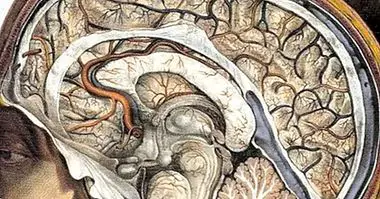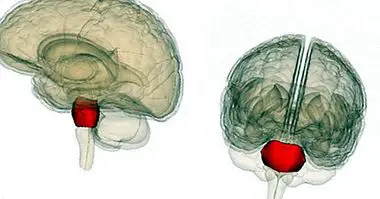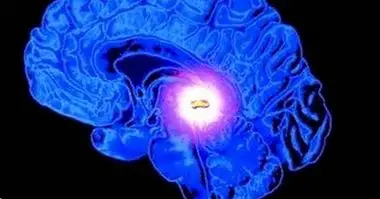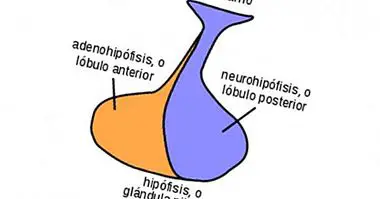What is neuronal depolarization and how does it work?
The functioning of our nervous system, in which the brain is included, is based on the transmission of information . This transmission is electrochemical, and depends on the generation of electrical pulses known as action potentials, which are transmitted through the neurons at full speed. The generation of pulses is based on the entry and exit of different ions and substances within the membrane of the neuron.
Thus, this input and output causes the conditions and the electrical charge that the cell normally has to vary, initiating a process that will culminate in the issuance of the message. One of the steps that this process of transmitting information allows is depolarization . This depolarization is the first step in the generation of an action potential, that is, the emission of a message.
In order to understand depolarization, it is necessary to take into account the state of neurons in circumstances prior to this, that is, when the neuron is in a resting state. It is in this phase when the mechanism of events begins that it will end in the appearance of an electrical impulse that will travel the nerve cell until reaching its destination, the areas adjacent to a synaptic space, to end up generating or not another nervous impulse in another neuron by another depolarization.
When the neuron does not act: resting state
The human brain is functioning constantly throughout its life. Even during sleep, brain activity does not stop , simply the activity of certain brain locations is greatly reduced. However, neurons are not always emitting bioelectrical pulses, but are in a resting state that ends up altering to generate a message.
Under normal circumstances, in a resting state the membrane of the neurons has a specific electrical charge of -70 mV , due to the presence of anions or negatively charged ions inside it, in addition to potassium (although this has a positive charge). But nevertheless, the exterior has a more positive charge due to the greater presence of sodium , positively charged, together with negative charge chlorine. This state is maintained due to the permeability of the membrane, which at rest is easily transferable to potassium.
Although by the diffusional force (or tendency of a fluid to be evenly distributed by balancing its concentration) and by the electrostatic pressure or attraction between the ions of opposite charge the internal and external medium should be equalized, this permeability makes it very difficult, being the entrance of positive ions very gradual and limited .
Further, the neurons have a mechanism that prevents the electrochemical balance from changing, the so-called sodium and potassium pump , which regularly expels three sodium ions from the inside to let in two potassium from the outside. In this way, more positive ions are expelled than could enter, keeping the internal electric charge stable.
However, these circumstances will change when transmitting information to other neurons, a change that, as mentioned, begins with the phenomenon known as depolarization.
The depolarization
Depolarization is the part of the process that initiates the potential for action . In other words, it is the part of the process that causes an electrical signal to be released, which will end up traveling through the neuron to cause the transmission of information by the nervous system. In fact, if we had to reduce all mental activity to a single event, depolarization would be a good candidate to fill that position, since without it there is no neuronal activity and therefore we would not even be able to stay alive.
The phenomenon itself to which this concept refers is the sudden large increase in electrical charge inside the neuronal membrane . This increase is due to the constant of positively charged sodium ions inside the neuron membrane. From the moment in which this phase of depolarization occurs, what follows is a chain reaction thanks to which an electrical impulse appears that travels through the neuron and travels towards an area far from where it has been initiated, expresses its effect in a nerve terminal located next to a synaptic space and it dies out.
The role of sodium and potassium pumps
The process begins in the axon of the neurons, an area in which it is located a high amount of sodium receptors sensitive to voltage . Although normally they are closed, in a state of rest, if there is an electrical stimulation that exceeds a certain threshold of excitation (when going from -70mV to between -65mV and -40mV) said receptors start to open.
Since the inside of the membrane is very negative, the positive sodium ions will be very attracted due to the electrostatic pressure, entering in large quantity. Both, the sodium / potassium pump is inactivated, so no positive ions are removed .
Over time, as the interior of the cell becomes increasingly positive, other channels are opened, this time of potassium, which also has a positive charge. Due to the repulsion between electric charges of the same sign, the potassium ends up going outside. In this way, the increase in positive charge is slowed, until reaching a maximum of + 40mV inside the cell .
At this point the channels that initiated this process, the sodium ones, end up closing, with which depolarization comes to an end. In addition, for a time they will remain inactive, avoiding new depolarizations. The change in the polarity produced will be moving along the axon, in the form of action potential , to transmit the information to the next neuron.
And then?
The depolarization it ends at the moment when sodium ions stop entering and finally the channels of this element are closed . However, the potassium channels that opened due to the escape of the positive incoming charge remain open, expelling potassium constantly.
Thus, with time it will produce a return to the original state, having a repolarization, and even it will reach a point known as hyperpolarization in that due to the continuous sodium output the load will be lower than the resting state, which will cause the closure of the potassium channels and the reactivation of the sodium / potassium pump. Once this is done, the membrane will be ready to start the whole process over again.
It is a system of readjustment that allows you to return to the initial situation despite the changes experienced by the neuron (and its external environment) during the process of depolarization. On the other hand, all this happens very quickly, in order to respond to the need for the functioning of the nervous system.
Bibliographic references:
- Gil, R. (2002). Neuropsychology Barcelona, Masson.
- Gómez, M. (2012). Psychobiology CEDE Preparation Manual PIR.12. CEDE: Madrid.
- Guyton, C.A. & Hall, J.E. (2012) Treaty of Medical Physiology. 12th edition. McGraw Hill.
- Kandel, E.R .; Schwartz, J.H. & Jessell, T.M. (2001). Principles of neuroscience. Madrid. McGraw Hill.



















